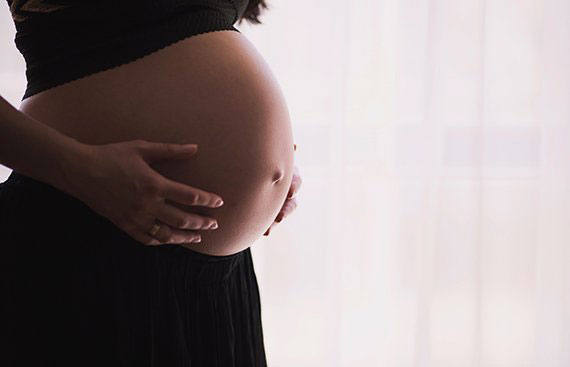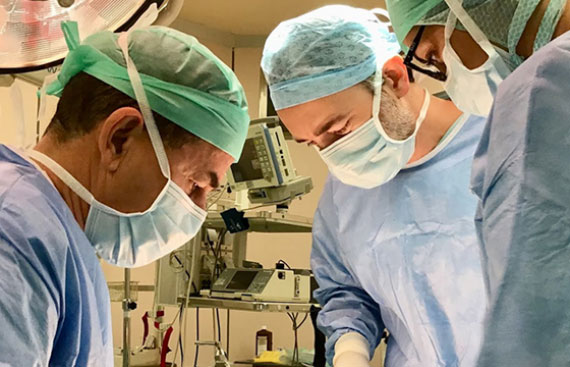Submucosal myomas are benign tumoral structures originating from the myometrium, which forms the uterine wall, they grow into the uterine cavity and often present with findings such as abnormal bleeding (such as excessive menstrual bleeding, non-menstrual bleeding), and inguinal pain. It is known to prevent implantation (embryo attachment to the uterus) during IVF treatment.
These myomas, which tend to grow during pregnancy, cause the following complications:
- Infertility
- Recurrent failures of implantation
- Abortion in the early period of pregnancy
- Premature birth
- Severe pain during pregnancy
Treatment: Hysteroscopic myomectomy
What is myoma?
Myoma is a common benign tumor in the uterus. It is estimated to develop in 20 to 50% of women over the age of 30. Genetic predisposition is thought to play a role in the development of myomas.What are the symptoms of myoma?
Myomas present with the following symptoms, which are frequently due to compression to the organs adjacent to the growing uterus with the effect of mass:- Infertility
- Uterine bleeding
- Groin pain
- Constipation
The severity of the symptoms varies according to the number, size and location of myomas.
How is myoma diagnosed?
The diagnosis of myoma diagnosis can be made by physical examination, transvaginal ultrasonography and/or hydrosonography (injecting fluid into the uterus and checking it with ultrasound) and hysteroscopy (examination of the inside of the uterus with a camera). Myomas are classified according to their location in the uterus:- Uterine cavity (Submucosal)
- In the wall of the uterus (Intramural)
- Through to outside of the uterus (Subserosal)
- In the ligaments that hold the uterus in place (Intraligamentary)
- In the cervix (cervical)
Submucosal, in other words, myomas growing into the uterine cavity are benign tumors and often show symptoms such as excessive menstrual bleeding and non-menstrual bleeding and groin pain.
The relationship of myomas with pregnancy
Submucosal Myomas cause unsuccessful pregnancy by disrupting embryo movement, irregularity in the intrauterine layer and disrupting blood flow. Myomas that tend to grow during pregnancy cause the following complications:- Infertility
- Recurrent failure in implantation of embryo
- Early miscarriage
- Early birth
- Severe pain during pregnancy

The relationship of myomas with infertility
It is known that during the IVF treatment process, myomas prevent the embryo from attaching to the uterus (implantation). Myomas cause failure in IVF treatment.How is myoma treated?
The treatment of myomas is surgical. Surgery varies according to findings, number and location of myomas, age of the patient and whether there is a desire to have a child. The most common causes of surgery in myomas are that they cause anemia by causing severe bleeding, cause severe inguinal pain and constipation by pressing on the intra-abdominal organs, and lead to infertility. These complaints are more common, especially in myomas growing into the uterus or on the uterine wall. It is easy to remove a myoma growing into the uterus by hysteroscopy (viewing the inside of the uterus with a camera and performing surgical procedures). Myomas growing on the uterine wall or outside the uterus should be removed by Laparoscopy (closed method) or Laparotomy (open method).Until recently, open surgery was performed with a large skin incision to remove myomas (myomectomy). Thus, the duration of hospital stay and return to normal physical activity were very long. However, today, 95% of myomas can be removed by experienced surgeons with laparoscopy.

Rahim içine doğru büyüyen bir miyom histeroskopi (rahim içinin kamera ile görüntülenmesi ve cerrahi işlem yapılabilmesi) ile rahatlıkla çıkarılabilir. Rahim duvarında veya rahim dışına doğru büyüyen miyomlar ise Laparoskopi (kapalı yöntem) veya Laparatomi (açık yöntem) ile çıkarılmalıdır.
Yakın zamana kadar miyomların çıkarılması (miyomektomi) için geniş bir cilt kesisi ile açık ameliyat yapılmaktaydı. Hastanede kalış süresi ve normal fiziksel aktiviteye dönüş süresi çok uzamaktaydı. Fakat günümüzde miyomların %95’i Laparoskopi ile deneyimli cerrahlar tarafından çıkarılabilmektedir.
Yakın zamana kadar miyomların çıkarılması (miyomektomi) için geniş bir cilt kesisi ile açık ameliyat yapılmaktaydı. Hastanede kalış süresi ve normal fiziksel aktiviteye dönüş süresi çok uzamaktaydı. Fakat günümüzde miyomların %95’i Laparoskopi ile deneyimli cerrahlar tarafından çıkarılabilmektedir.




